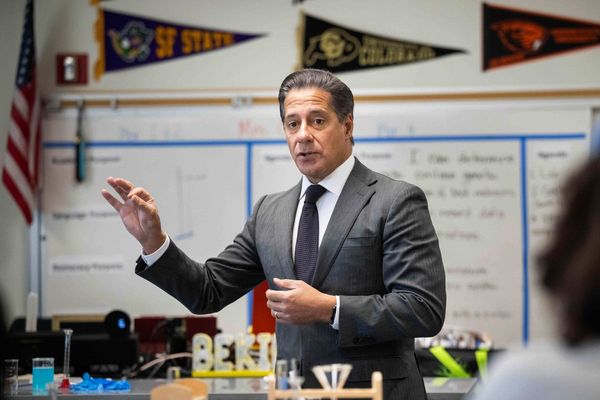Last week, after hawkish testimony from Federal Reserve Chair Jerome Powell, markets penciled in a half-point increase in interest rates following the central bank’s next policy meeting. On Friday, the run on Silicon Valley Bank and subsequent fears of a wider crisis changed many investors’ minds. Some bet that the Fed would forgo further rate hikes entirely this year.
The latest inflation figures suggest that would be a mistake. The need to keep pressing down on demand hasn’t gone away, and the SVB fiasco shouldn’t deflect the Fed from the goal Powell outlined: getting the inflation rate back down to its stated goal of 2%.
Consumer prices rose 0.4% in February, or 4.5% at an annual rate. Core CPI inflation, excluding food and energy, rose by 0.5%, or 5.6% at an annual rate. The prices of core services, to which the Fed pays especially close attention (albeit using a different metric), went up 0.6%, or 7.7% on an annual basis. New figures for wholesale prices pointed the other way, surprising analysts by showing a decline. Taken together, the numbers suggest that the trend in inflation may be flattening out at more than twice the central bank’s target — and that the current policy rate of 4.5% – 4.75%, far from being appropriately restrictive, is still zero or less in real terms.
To be sure, if regulators had let the SVB emergency — followed by the collapse of Signature Bank and investors’ flight from some smaller institutions — trigger a system-wide financial meltdown, there’d be no need for higher rates. In that case, excess demand would’ve been the least of the Fed’s problems. As things stand, though, the risk of contagion has been dealt with, and the knock-on effects on the broader economy will likely be minimal.
Those calling for a pause in monetary tightening argue that the fright over SVB shouldn’t be separated from the economic outlook. They say that it points to the dangers in raising interest rates too abruptly, and that the scare is itself a leading indicator of subsiding demand — it shows that the tightening already applied is finally starting to work.
Neither objection is persuasive. Raising interest rates is indeed risky, and not just because it imposes unrealized losses on banks like SVB that channeled very large deposits into long-duration fixed-rate securities. But failing to get inflation under firmer control is even riskier. A pause now might only delay, not avoid, the need for higher rates — and could necessitate even bigger subsequent increases. As to whether the tightening to date is sufficient, the failure of an unusual and badly run bank is hardly dispositive. The inflation numbers, together with labor-market indicators, give a better read on the state of demand, and their message, for the moment, is unequivocal.
SVB certainly makes one thing clear: All of a sudden, things can change. The situation bears watching, and the Fed should always be attentive to new information. For the moment, though, assuring the safety of the financial system and getting on top of inflation are separate tasks. This is no time to retreat.
____
The Editors are members of the Bloomberg Opinion editorial board.







